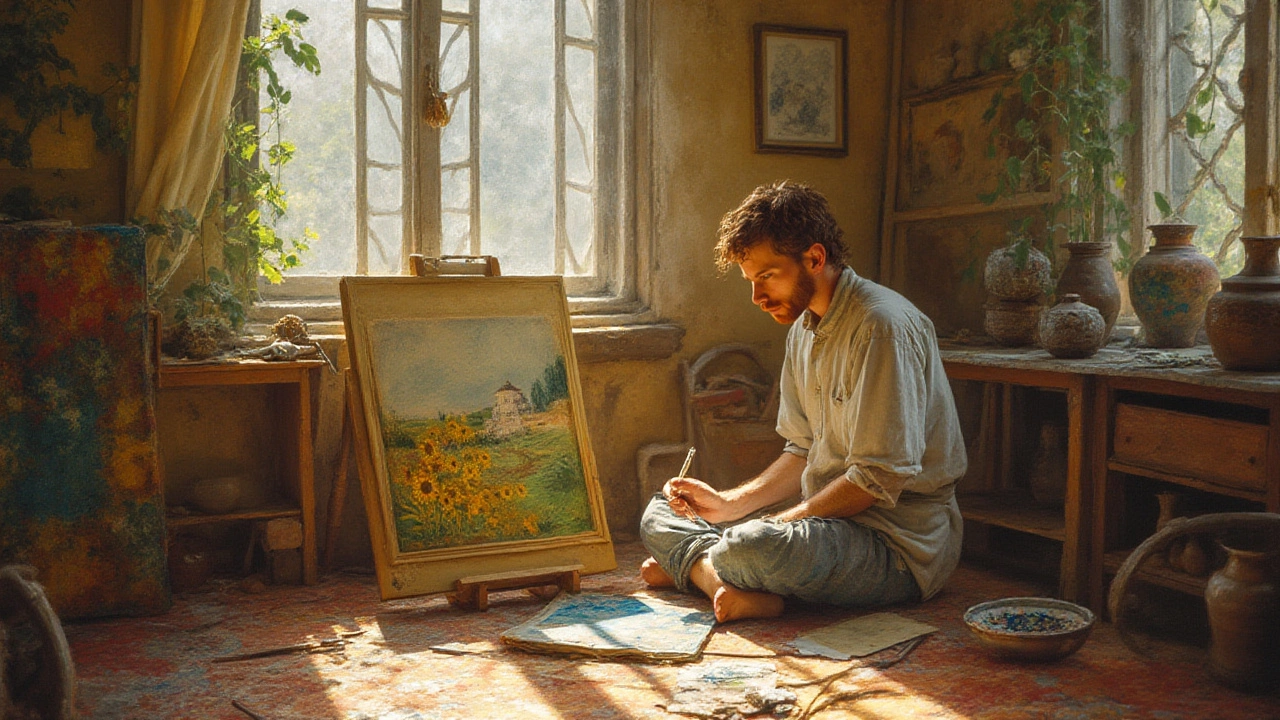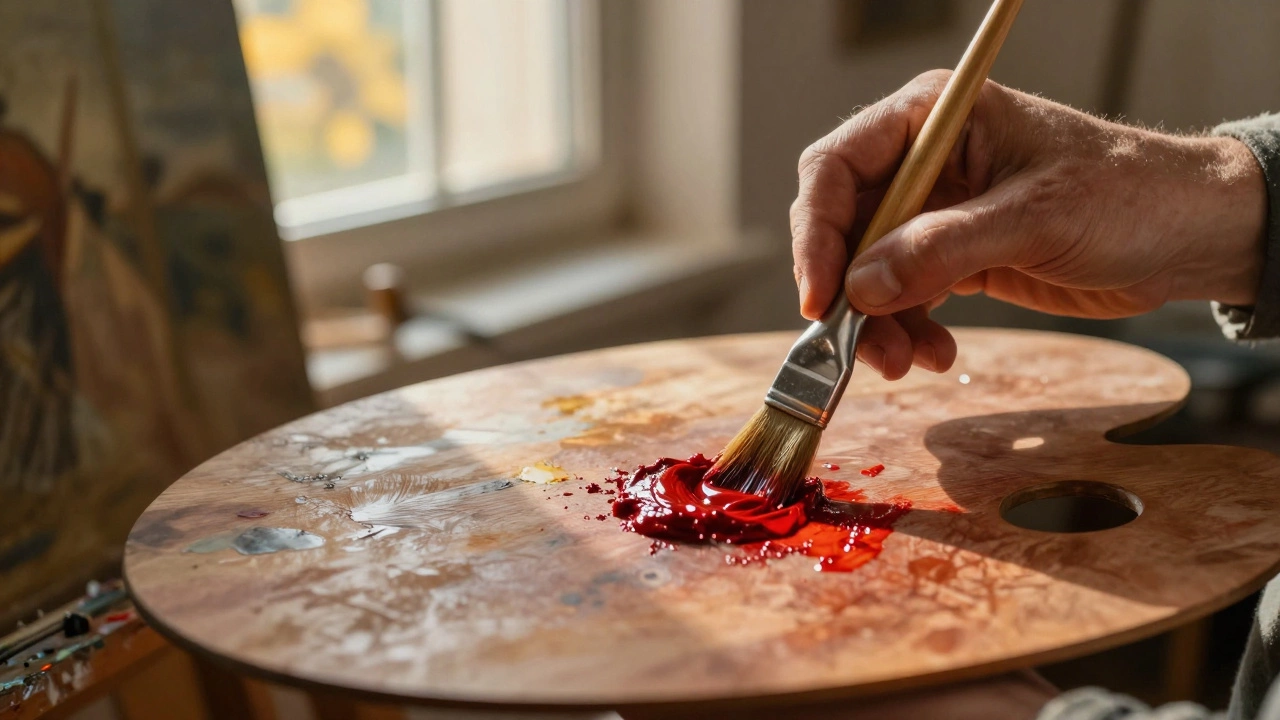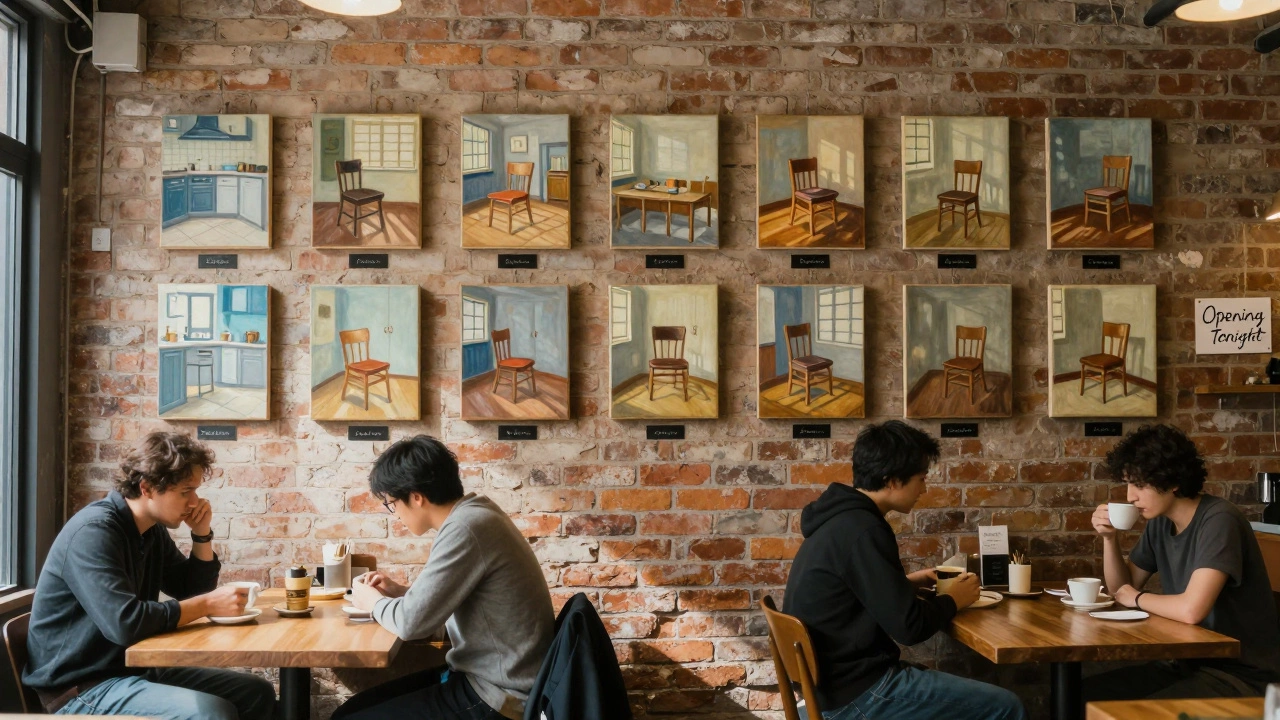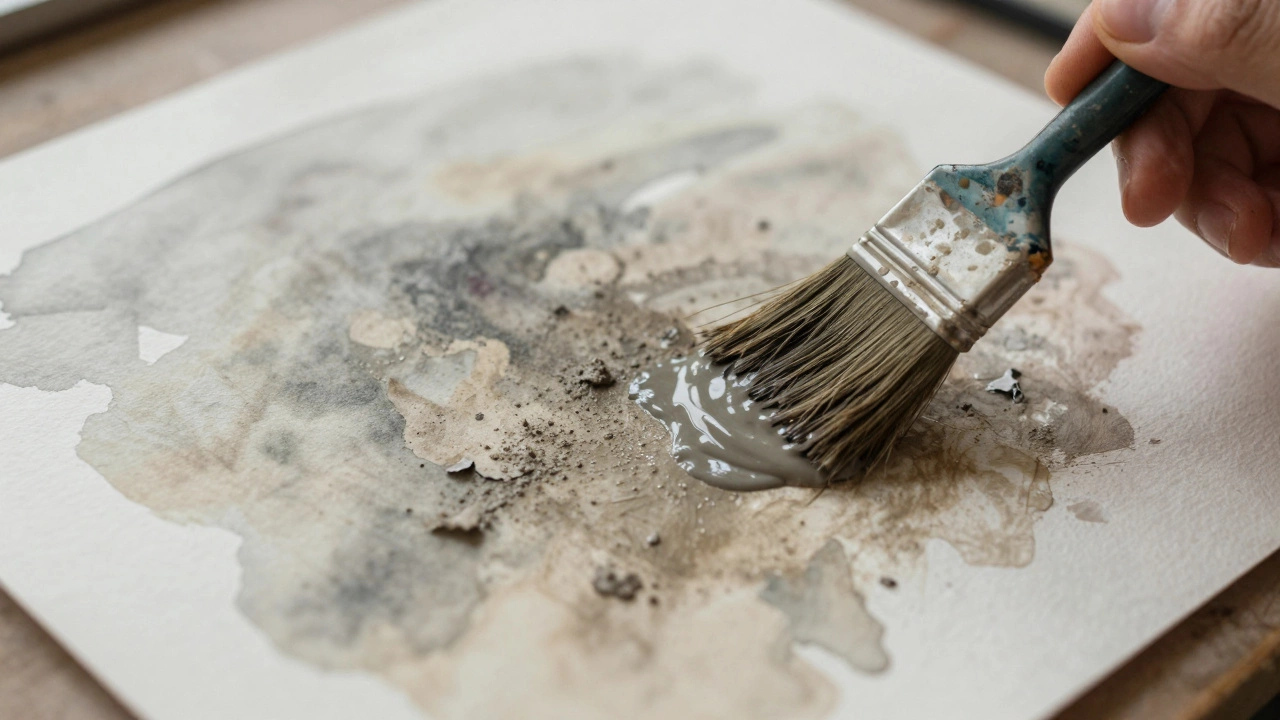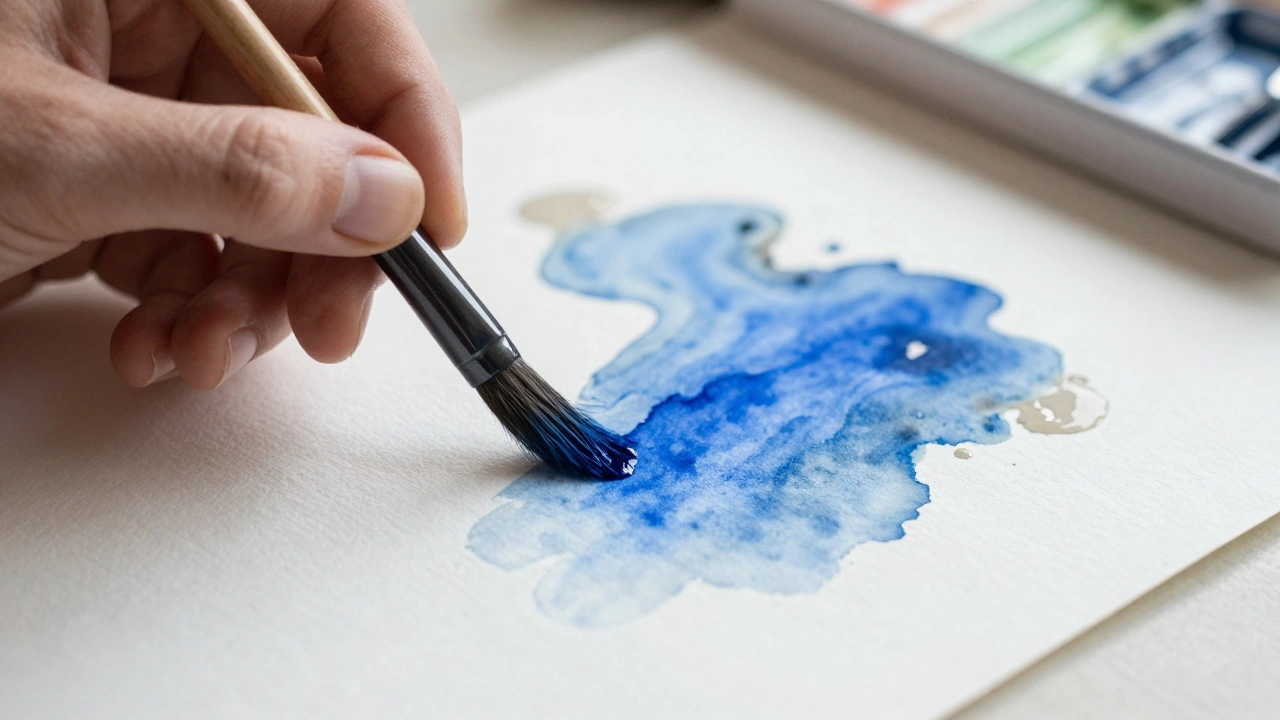Did Van Gogh paint with watercolors? Most people associate him with his rich, swirling oil paintings—the sunflowers, the fields pulsing with so much life you can feel the breeze swirl. But there’s a story not everyone knows about Vincent’s brushes: He did, in fact, sometimes reach for watercolors. The image of Van Gogh hunched over a watercolor palette is a rare one in modern minds, but it’s absolutely real. That quirky, intense style wasn’t confined to oils. People often picture watercolor as tame, but in Vincent’s hands, it could be downright electric.
The Hidden Watercolor Works of Vincent van Gogh
Van Gogh’s oil paintings get all the spotlight, but he left behind a refreshingly playful collection of watercolors. Here’s the cool part: he painted over 150 pieces in this softer, more unpredictable medium. Most of these came from his early years, before he discovered the bold punch of oils. The earliest watercolors date back to around 1881, while he was still piecing together his identity as an artist. You see a different kind of energy in those pieces—soft, but not washed-out; practical, but still vibrant. Some of my favorite examples are his landscapes and studies of cottages, which feel like daydreams made visible. They’re less famous than his oil masterpieces, yet they sometimes pop up in museum shows or auction catalogs—much to the surprise of visitors who didn’t expect him to work beyond oils.
Why did Vincent try out watercolors anyway? For one thing, they were affordable and portable, perfect for a struggling artist. Before oils became his signature, Vincent mostly sketched and experimented with whatever supplies he could get. He absorbed the basics from French and Dutch artists around him. He learned from the Hague School painters, where watercolor wasn’t lowbrow—it was a legitimate way to master atmosphere and light. When you look at Vincent’s watercolors, you spot all kinds of themes he’d revisit later: rambling landscapes, windswept cottages, restless skies. It’s like seeing him warm up for his greatest hits. But don’t just take my word for it. In a letter he sent to his brother Theo in September 1882, Vincent wrote:
“My intention is to learn to work with watercolours just as well as I can with black and white... the effect is beautiful, especially for studies of the countryside and of people.”That commitment—always learning, always exploring new ground—is such an honest snapshot of who he was.
Now, are Van Gogh’s watercolors as punchy as his oils? Not really, but that’s kind of the point. They have a simpler vibe, more transparency, and sometimes a loose, sketchy quality. There’s a lovely painting titled Fishing Boats on the Beach at Scheveningen where the quick washes of blue paint make the sea feel windswept and alive. Another piece, Cottages and Houses from 1883, turns farm life into something peaceful. Because watercolors are harder to correct than oils, a single rushed gesture can’t really be patched up—so you get a peek at Vincent’s hand in each brushstroke. And since watercolors require speed—no endless reworking allowed—you see his restless, impulsive energy up close.
Most people miss these works because museums keep them in storage. Watercolors fade faster than oils, so curators can’t leave them in the sun for centuries. But the hidden treasure exists, and you can sometimes catch glimpses in temporary exhibitions. The Van Gogh Museum in Amsterdam holds around 40 of his watercolors, tucked away from the main crowds. When they do go out on display, they reveal a shy, searching side of an artist famous for his confidence.
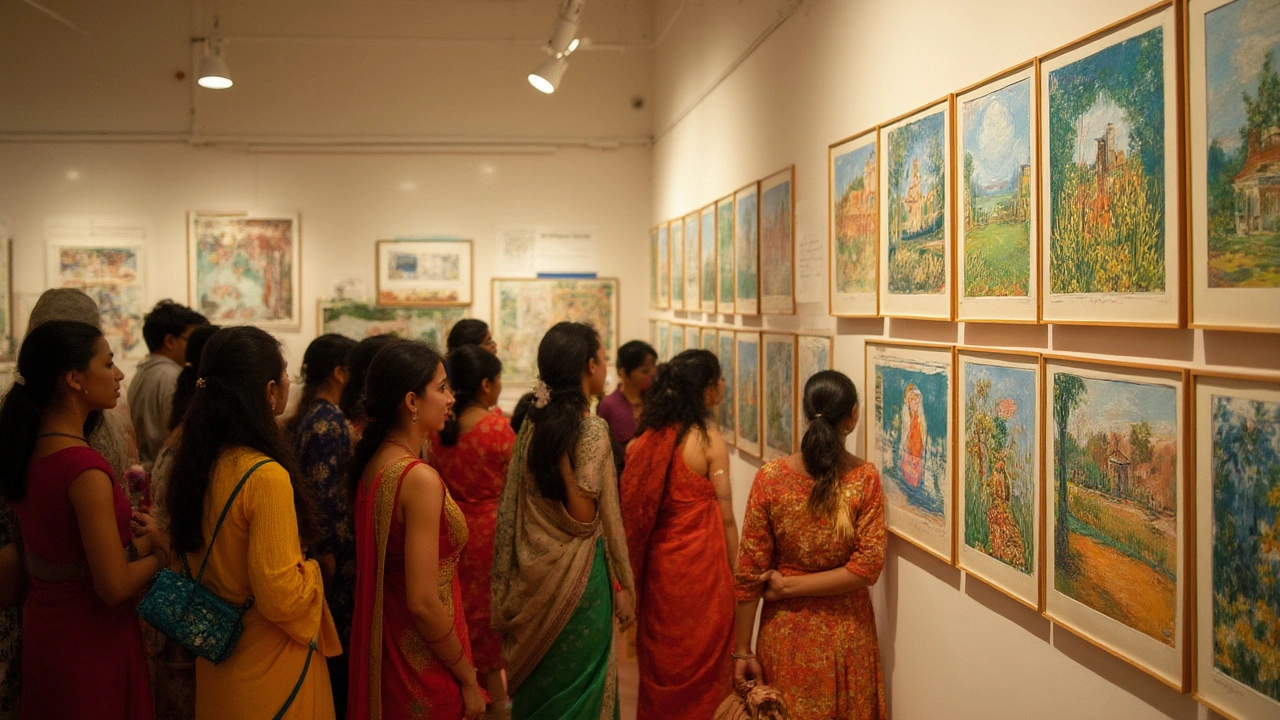
Painting Techniques: How Watercolor Shaped Van Gogh’s Style
So how did Van Gogh approach watercolor? For starters, he didn’t just use it as a stepping-stone to oils. Watercolor pushed him to try new things. Think about how hard it is to correct a mistake with watercolors—once you lay a bold stroke, there’s no going back. Vincent had to be deliberate, bold, and sometimes downright brave with his choices. While many artists aimed for gentle, see-through washes in their watercolors, Van Gogh was up for taking risks. He layered colors more than most, often blending pencil or ink with his watercolor washes. He played with perspective, using jagged, loose lines to give his scenes a rush of energy—long before he became famous for swirling paint across canvas.
This isn’t just me guessing. In one of his letters from 1882, Van Gogh explained to Theo, “I am making great progress with watercolors, I am beginning to handle them with more boldness.” No shrinking violet here. He seemed determined to break rules, skipping the tidy, mannered look you’d find in proper English or French watercolor traditions. He wandered through fields in the rain and scribbled fast, knowing there was no time to fuss over mistakes.
It’s worth looking closer at his favorite techniques. Van Gogh often started with a sketch, building up layers with pencil or brown ink. Then he’d brush on bold, sometimes muddy colors, skipping fancy paper or materials. He wasn’t precious: for him, watercolors were all about the raw effect. You can see this in pieces like Peasant Woman Digging (1885), where quick, rough strokes capture a moment in time—almost like a snapshot. Sometimes he would scrape or lift the paint, using the tip of his brush or a knife, a trick he picked up from his mentors in the Hague. In other works, he painted wet-on-wet, letting colors run and blend unpredictably.
Here’s a fun detail: he rarely used more than a handful of colors. In fact, he hated being overwhelmed with fancy supplies. His palette was usually muted—grays, browns, greenish hues—especially before his move to Paris in 1886. Later on, when Paris exposed him to the wild, bright tones of Impressionism, his watercolors got bolder and more experimental, though he still kept a certain messy honesty. For students or artists reading this, it’s tempting to copy Vincent’s attitude. Don’t freeze up about getting things “just right”—sometimes going with quick choices leads to magic.
Van Gogh’s watercolors aren’t just art—they’re windows into his process. You get to watch him practice effects he’d use later in oils. The way he attacked skies and grass in watercolor seems to foreshadow his famous The Starry Night or Wheatfield with Crows. It’s the same restless motion, only softer. If you’re curious to see the materials he used, here’s a quick overview:
| Material | How Van Gogh used it |
|---|---|
| Watercolor paint (Dutch/French brands) | Applied in quick, bold strokes, often straight from the tube |
| Brown ink or pencil | Initial sketch or outline, sometimes left showing through the paint |
| Ordinary watercolor paper | Not always the expensive variety—a practical choice for his budget |
| Mixed media (combining ink, pencil, and watercolor) | To add layers, details, or a sense of speed |
You might wonder how museums preserve such fragile pieces. Because of their sensitivity to light and moisture, most of Van Gogh’s watercolors live behind glass, kept in carefully controlled climates. That’s why so few of us have seen them in person—and also why, when they do go on display, it’s a bit like spotting a shooting star.
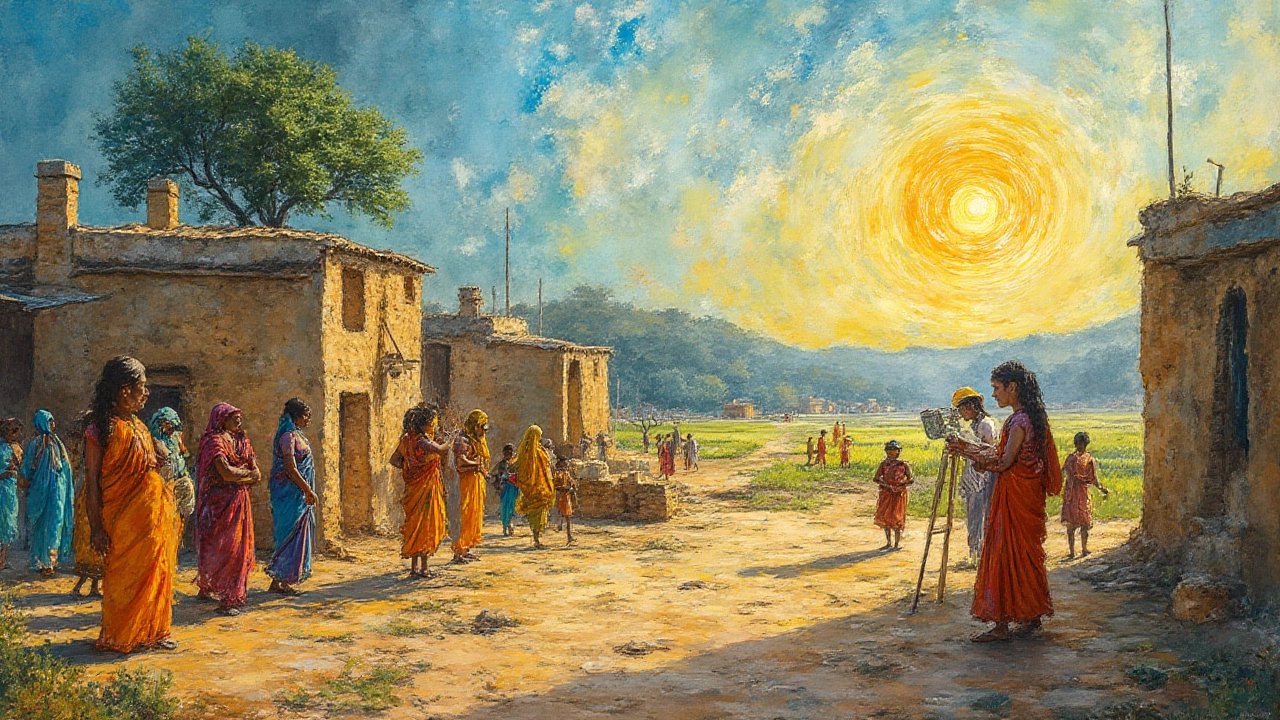
Navigating the Myth: Why Van Gogh’s Watercolors Matter Today
People love a good tale about tortured artists—especially Van Gogh. But it’s easy to forget he was a real person, learning and experimenting just like anyone else. His watercolors bust that myth wide open. He wasn’t just a dramatic genius hacking at canvases; he was a tireless student, often using watercolors to try out new ideas on the fly.
There’s a practical lesson here. If you’re an artist (or just someone who gets stuck fiddling with details), take a cue from Vincent. He didn’t wait for perfect conditions. If he had only scraps of paper and a cheap watercolor set, he’d still go outside and try to capture the sky before the clouds shifted. That sort of flexible, make-do attitude feels like a secret superpower. And there’s data to back up its impact: according to the Van Gogh Museum’s own records, around 5% of the artist’s surviving works are watercolors—a significant chunk considering how many have faded or been damaged.
It’s also fascinating to see how critics, collectors, and everyday viewers react to these pieces. During Van Gogh’s lifetime, his watercolors were some of the first works to sell. Collectors viewed them as “more finished” and less risky than wild oil paintings. According to art historian Ronald Pickvance, “It was Van Gogh’s watercolors—modest, accessible, unthreatening—that gave him his earliest taste of commercial acceptance.” But fast-forward to today, and many fans of Van Gogh have never heard of his watercolors or had the chance to see them up close. It’s a little like missing out on great B-sides from your favorite band.
If you ever get to attend a Van Gogh show, check for small watercolors or works on paper tucked in the corners. Those are the pieces that reveal his practice moves, his hesitations, his wild guesses. And if you’re a collector or digital art enthusiast, it’s worth keeping an eye out on auction sites—authentic Van Gogh watercolors are rare and valuable, sometimes commanding millions at sale.
Before you forget, here are a few tips if you suddenly feel inspired to try watercolor like Vincent:
- Use what you have—don’t wait for fancy supplies.
- Work fast, and don’t worry about mistakes. Every mark teaches you something.
- Sketch first, then build color slowly. Let your pencil or ink lines show through if you like that unfinished vibe.
- Keep your palette simple. A few earthy colors can say a lot.
- Embrace accidents—sometimes they look even better than what you planned.
If Van Gogh can wrestle peace and power out of a humble watercolor set, so can you. There’s no rule that says masterpieces have to be painted in oil. Sometimes, expressing yourself is as simple as picking up a brush and letting the colors run wild, just like Vincent did.
